Hi y’all! Holly here reporting on this rainy and humid day at Grow Appalachia HQ in Berea. On September 10th, Mark (our technical director) and I packed up and headed out to Greenhouse 17, or GH17, as we call it; they’re a partner site of ours located in rural Fayette County, outside of Lexington. You may remember it as the Bluegrass Domestic Violence Program. Upon arriving I immediately felt an ambiance of peace there, as the facility is located on several acres of countryside farmland. Having grown up in the countryside of southeastern Ohio, it was a much more welcoming atmosphere of Lexington to me, compared to the bustling city and chaotic traffic that I’m familiar with. A bit of background: Greenhouse 17 is a domestic violence shelter that provides a wide array of services, their basis being that fresh air and working in the garden can be very healing. While they do have a thriving vegetable garden, their forte is flowers, which have paved the way for a very successful flower community program; they provide arrangements for weddings and other events in the area, and they also began a CSA in the summer.
We have a current partnership with Greenhouse 17 in that we are going to be building three high tunnels for them; the exact timeline is still a bit up in the air but I imagine we’ll want all three, fully constructed, in about a year’s time. The first tunnel began construction on Tuesday the 9th, so when I arrived Wednesday morning, the hoops were already in place and constructed. I was told that that was the day’s work! High tunnel building is an art, folks, as you’ll soon find out in these words to come.
The morning started out with a challenge of monumental proportions, and that was getting the ridge pole into place. For those of you who may be unfamiliar with high tunnels, the ridge pole is a pole that runs through the top of the high tunnel that connects all of the hoops together, so it provides stability at the “roof” level. The challenge this poses is that the pieces at the hoop’s top and the diameter of the ridge pole are essentially the same size, so there is no room for error whatsoever. Our procedure for this endeavor began with Mark on a ladder and Jessica, one of the GH17 staff members, on a makeshift scaffold (our cattle trailer with a couple of 2 x 4’s running through it). Pictures of all of this are posted below…we GA folks know how to get creative! Anyway, after a bit of finagling, it was suggested that the hoop pieces and pole be greased, so as to allow for a bit more give. Why on earth didn’t we think of that? After weighing in on possible leverage agents, including the potential for WD40, a few of the GH17 staff went off in search of the perfect grease. The contender: vegetable oil! A small amount of vegetable oil applied to a rag worked absolute wonders, although the task was still not an easy one. Getting that first ridge pole in through the front half of the tunnel took all morning, an almost back-and-forth system of driving the pole through with a rubber mallet, adjusting the hoops as needed, and then whacking the hoops to “feed” the pole through. Yes, I did just use the term “whacking”. It was whacking in every sense of the word, and it provided a heck of an arm workout. Perhaps, in the future, it could be marketed as a new stress-relief or aggression-release method.
Our vegetable oil-blotted rag in hand, we proceeded to the next ridge pole; this pole would comprise the second half of the ridge pole system and, with the first one in place, would comprise the entire top of the tunnel. Imagine our surprise when the second ridge pole was up in roughly a third of the time! Perhaps we had mentally prepared ourselves for the task at hand and were better equipped to manage it, I’m not entirely sure. Nevertheless, there was a brief moment of triumph shared by all! After the ridge pole was in place, Jessica and one of our help secured the baseboards; the baseboards for this particular high tunnel model are simply a 2 x 8 or a 2 x 10 board, secured to the ground posts with some screws and washers.
Meanwhile, Mark, myself and Christina (another GH17 staff member) secured the hipboards. The hipboards provide support about midway up the hoop; they can either be placed at four feet from the ground or five feet, and they’re merely screwed into the hoops, close to the point where they curve. For us, we originally had them set at four feet, but in the end, we placed them at five. The higher placement is to allow for better ventilation in the summertime.
After a late-day break of some kindly provided fruit and other goodies, we divided and conquered once again: Jessica and an afternoon volunteer attached the wiring frame to the hipboards, whereas Mark, Christina and I attached the purlins to the hoops. The purlins are a mechanism composed of U-shaped pieces and another length of pipe; this provides support towards the top of the structure, but not directly at the top (I am not a construction guru by any means, so I hope the pictures will explain it better than I’m managing to).
By the end of the day, there was more than a “skeleton” in place, so I believe everyone was pleased when we finished. Nothing quite like seeing where you began and where you ended at the end of a long day; even just a small addition makes a big difference!
One aspect I can’t ignore is the amount of help we had during the day. A few instances throughout the day, people would show up directly at the work site, check in with Jessica, and then just jump in wherever we were. No questions, no prompting, nothing; just jumping in and lending a hand. So a quick shout-out to GH17 directly: the help was GREATLY appreciated by Mark and I, so thank you, thank you, thank you! You guys were rockstars out there!
Like I mentioned earlier, our plan is to construct three tunnels at GH17. Construction is well underway for the first, and while the process is rather slow-going, I am optimistic by the progress made, as well as the future that GH17 has planned for themselves and their clients. So to briefly close, it was another rather enjoyable site visit. I am really enjoying this aspect of my VISTA service! I could easily get used to it!





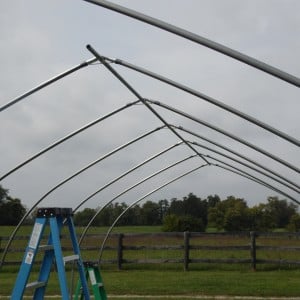
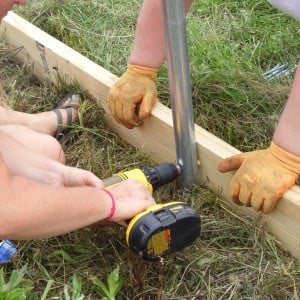



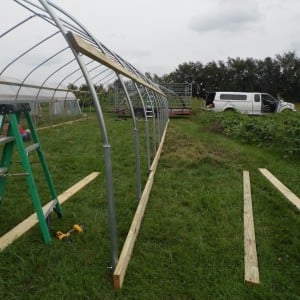

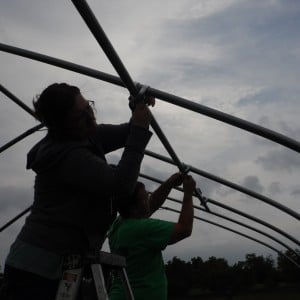
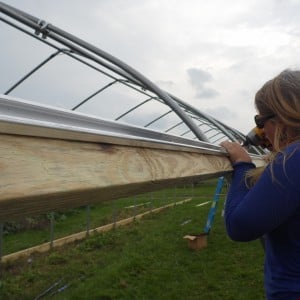
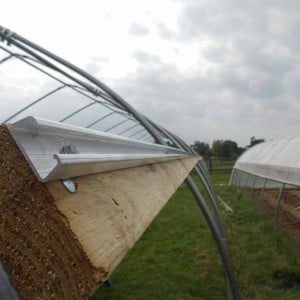
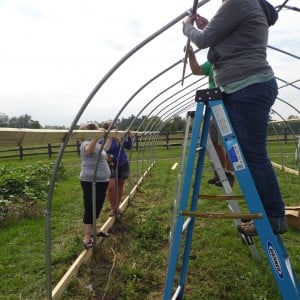
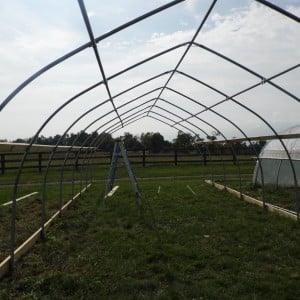

This is a well written article! Having been through the process of building high tunnels myself, I believe you described a lot of the processes very well. It’s looking good!